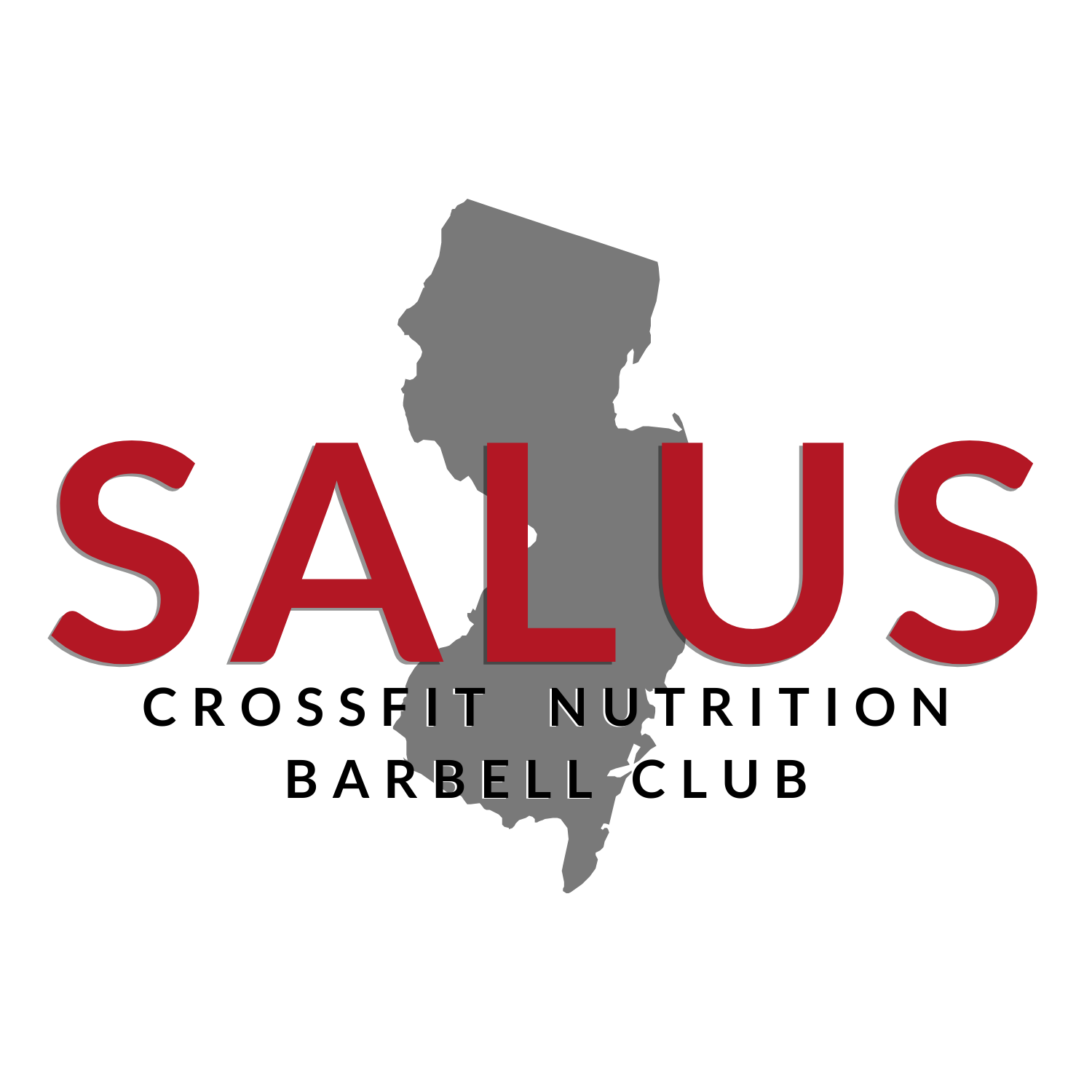Is Sugar Bad? Plus Hidden Names for Sugar
Is sugar bad? Will sugar make me gain weight? When is it OK to eat sugar?
Many of us think of sugar as the white stuff people put in their coffee and the stuff that makes up most of those cereals in the breakfast “food” aisle. Sugars also occur naturally in many whole foods such as fruits, vegetables and even whole grains. You recognize these as “carbs.”
Along with sugar, the macronutrient carbohydrates also includes starch (potatoes or rice), fiber (husks of whole grains), etc. The more complex the molecule, the slower it digests. That’s why eating more fiber can help us feel fuller for longer. Sugars, on the other hand, are simple- they digest very quickly. In other words:
Sugars are a type of carbohydrate, but not all carbohydrates are sugars.
The above point is vital to understand, because it teaches us that not all carbs do the same things in (and for) our bodies.
Let’s take a fresh look at sugar now and address the question many are wondering: is sugar bad?
Eating Sugar: The Good. The Bad. The Ugly.
Is Sugar Bad? Well, It Can Be Ugly.
No doubt, this is a difficult topic to address because most of us are emotionally attached to where we stand on food, especially sugar.
Try talking about the topic at the dinner table and you’ll be just as welcome as if you were talking about politics. Trust me, I’ve been there.
Did you know that most U.S. adults consume about 22 teaspoons of added sugars every day. That’s way more than what the American Heart Association recommends, which is no more than 6 teaspoons (100 calories) a day of sugar for most women and no more than 9 teaspoons (150 calories) a day for most men. Sugar impacts our brain function, it can lead to non-alcoholic fatty liver disease and can increase your risk of heart disease.
And sugar is hiding everywhere.
Over 68% of barcoded food products sold in the US contain added sweeteners—even if they are labeled as “natural” or “healthy.” The safest way to ensure you’re not ingesting excess added sugars is to get in the habit of reading the ingredient list below before you add them to cart.
Added sugars fall under all kinds of different names on ingredient labels. As a side note, the higher up an ingredient is on an ingredient list, the more of it will be included in that product. Find an ingredient ending in “ose” on the top of the list, put the product down. Many of those sugary products are empty, meaning they have no other nutrients associated with them. These products generally contain little protein, fat, fiber, vitamins or minerals.
Common Hidden Names for Sugar
(Excluding artificial sweeteners and sugar substitutes)
Basic Simple Sugars (monosaccharides and disaccharides):
- Dextrose
- Fructose
- Galactose
- Glucose
- Lactose
- Maltose
- Sucrose
Solid or Granulated Sugars:
- Beet sugar
- Brown sugar
- Cane juice crystals
- Cane sugar
- Castor sugar
- Coconut sugar
- Confectioner’s sugar (aka, powdered sugar)
- Corn syrup solids
- Crystalline fructose
- Date sugar
- Demerara sugar
- Dextrin
- Diastatic malt
- Ethyl maltol
- Florida crystals
- Golden sugar
- Glucose syrup solids
- Grape sugar
- Icing sugar
- Maltodextrin
- Muscovado sugar
- Panela sugar
- Raw sugar
- Sugar (granulated or table)
- Sucanat
- Turbinado sugar
- Yellow sugar
Liquid or Syrup Sugars:
- Agave Nectar/Syrup
- Barley malt
- Blackstrap molasses
- Brown rice syrup
- Buttered sugar/buttercream
- Caramel
- Carob syrup
- Corn syrup
- Evaporated cane juice
- Fruit juice
- Fruit juice concentrate
- Golden syrup
- High-Fructose Corn Syrup (HFCS)
- Honey
- Invert sugar
- Malt syrup
- Maple syrup
- Molasses
- Rice syrup
- Refiner’s syrup
- Sorghum syrup
- Treacle
Looking Deeper
Let’s look deeper at ten common sweeteners:
- AGAVE NECTAR (Agave Syrup)- found in cereals, ice cream, and “healthy” organic foods. This sweetener is more concentrated than HFCS (High-Fructose Corn Syrup), so use cautiously.
- BARLEY MALT- found in beers, cereals, and candy bars. This grain-based sugar is half as sweet as white sugar, but it’s just as high on the glycemic index.
- BEET SUGAR- found in more than 20 percent of the world’s sugar. But don’t be fooled, the word beet suggests this sugar is natural, but it’s not. The beets used for this refined sugar are stripped of their nutrients when processed for use in many packaged foods.
- BROWN SUGAR- found in baked goods, sauces, beverages. Brown sugar is just as bad for you as table sugar. The only real difference? How it tastes and how it has been processed.
- CANE JUICE (Evaporated Cane Juice)- found in yogurt, lemonade, liquor. Although less processed than table sugar and contains more riboflavin, it’s benefit is negligible.
- CANE SUGAR- found in 80% of the world’s sugar. Multiple studies have shown how cane sugar drastically raises blood pressure and cholesterol and also contributes to insulin resistance.
- CORN SYRUP (High-Fructose Corn Syrup)- found in sodas, cereal bars, bread, junk foods, fast food. Corn syrup is 100% glucose. Just one tablespoon contains 16 grams of carbohydrates. To make HFCS, enzymes are added to corn syrup to convert some of the glucose to fructose making HFCS “high” in fructose compared to the pure glucose found in corn syrup. Your body metabolizes this sugar in a way that encourages body-fat storage.
- EVAPORATED CANE JUICE- found in baked goods, cereals and many beverages. Actually not a juice, evaporated cane juice is a sweetener derived from sugar cane syrup making it much more concentrated than a juice with trace amounts of nutrients.
- FRUCTOSE- found in baked goods, but also occurs naturally in fruits and honey. Ingesting added fructose (not naturally occurring) has been linked to rising obesity rates over the past several decades. When you eat a piece of fruit, you also get a healthy dose of fiber that can help to slow the absorption of sugar and provide a wide variety of phytonutrients and minerals that can counteract the effects of sugar. Nobody does it better than nature.
- HONEY (raw honey)- Honey is higher in fructose than table sugar and it weighs more than the white stuff, so it’s more calorically dense at 21 calories per teaspoon vs 16 cals for table sugar. On the plus side, honey is sweeter than table sugar, so you won’t need to use as much.
Sugar in Cereal
Stay with me for a moment while I go on a little rant.
About cereal.
Yes, I know, most Americans love their breakfast cereals (I grew up eating cereal – though my parents saved the extra sugary stuff for Saturdays). Cereal is bright & colorful, it’s sweet, it’s super convenient….and we mistakenly think it’s good for us and our kids.
And cereal brands spend millions of dollars every year marketing to our kids to make us think that. In fact, during kids TV shows the top category of advertised food is… you guessed it, cereal (even beating out candy, other snacks and fast food).
Did You Know:
- On average, cereal’s that are marketed to children have more than 40% more sugars than “adult” cereals, and more than 2x the sugar of oatmeal.
- According to EWG’s analysis, Kellogg’s Honey Smacks (which used to be called Sugar Smacks) leads the list of one of the highest-sugar cereals.
- And, even with the update in food label regulations, since serving sizes on cereal labels are still unrealistically small, many adults and children will typically eat more than one “serving” in a single sitting. And according to FDA’s analysis of food consumption data, 97 percent of the most common cold cereals underestimate the amount of cereal people actually eat.
Bottom line: most cereals are just as sweet as cookies and should not be considered a part of healthy meal. But, if you just can’t give up cereal, use common sense, read the ingredient label, and as always, don’t believe any information printed on the front of the box.
Eating Sugar: The Good
OK, thanks for hanging in with me.
Now about the good.
Somewhere along the way, we started hating on all sources carbs. But (all) carbohydrates are not the enemy here.
We need carbohydrates for energy. They are energy-packed compounds that give us quick energy. This is why choosing the right source of food where those sugars come from is so important.
It should go without saying that you’ll find much more sugar in processed foods than in whole, nutrient-dense foods.
Along with starch and fiber, sugars live under the larger umbrella: carbohydrates. The more complex the molecule, the slower digestion takes. Simple sugars, like from fruit, digest quickly and can have a positive effect in the right amount at the right time (ie: right before/during/after exercise). Starch and fiber, which is a much more complex molecule, digests slowly and help you feel fuller, for longer.
Unfortunately, one problem we’re faced with is this strange notion in our culture that if you’ve worked really hard in a workout, you deserve a big, gooey, sugary treat. Maybe this satisfies an emotional hunger temporarily, but it is certainly not what your body needs after a training session. Get clear. What your body needs is some real, whole foods.
When in doubt, opt for a diet mostly composed of lean meats, vegetables, essential fats, little starch, little fruit and plenty of water. Your body, your training and your health will thank you big time!
Why Does Sugar Taste Good?!
Sugar tastes good, partially because when it’s in its natural state, whole foods, like berries, are full of good stuff like vitamins, minerals, and energy. Our bodies are naturally attracted to them.
But everyone is different. Some of us pull the dessert plate closer after dinner while others can easily shrug off grandma’s pumpkin pie. Some of us simply respond to sugar more than others which could be from genetics or something we learned growing up. Which brings us to the next question number.
Will Eating Sugar Make Me Gain Weight?
The over-consumption of foods that have added sugars (not generally those foods that have naturally occurring sugars) can contribute to health problems such as diabetes and obesity. Added sugars feed yeast and bad bacteria in our bodies which can damage our intestinal wall, increasing intestinal permeability, AKA: leaky gut. That can trigger chronic, low-grade inflammation and lead to the transfer of substances from our gut into our bloodstream. In turn, this can lead to obesity and other chronic, metabolic diseases.
Plus, if we eat more processed, sugary foods, we’re probably taking in more energy (calories) overall. Many of these foods are tasty, in fact they’re engineered to make it hard for you to stop eating. And since we digest and use their energy very quickly, these processed foods tend to overstimulate our brain’s reward/pleasure centers which can lead to weight gain and even obesity. Data from the USDA tracking food intake from a variety of angles show consistent trends. Since 1980, Americans have continued to eat about the same total amount of fat, yet ate more carbohydrates, especially refined ones with added sugars. Over this time, the obesity rates in the United States have also grown significantly.
The World Health Organization defines “obese” as having a Body Mass Index higher than 30. Of course, some fit and muscular athletes tend to have a higher BMI even though they still have a low percentage of body fat. So, let’s look at those number for a moment. Currently, the average body fat percentage for women is about 40%, for men: 28%. To compare, the “healthy” range for a woman should be around 22-33%, and for men, that range should be around 11-22%.
While we can’t blame one single thing alone, including sugar for all the health problems and obesity surge (sleep & stress factor in, too), multiple studies do show that an increased sugar consumption does correlate with increased obesity levels, non-alcoholic fatty liver disease, leaky gut, diabetes and cancer.
How Much Sugar Should I (Can I) Eat?
Remember: Sugar (alone) doesn’t provide nourishment. No vitamins, no minerals, no fiber, no antioxidants, phytonutrients or hydration.
Sugar from nutrient-dense, whole foods, like fruit on the other hand, contains sugar, but they provide numerous positive health benefits.
When it comes to how much sugar (from whole foods) you should eat, everyone is different and has unique energy needs. Some people do well cutting sugar out of their diet (almost) completely, while others thrive on a high-carb diet. Some athletes will count their sugar intake down to the gram, while others do well with the general guideline of “eating less-processed foods & more healthy foods” and be very successful.
As a general guideline, the Dietary Guidelines for Americans (2015-2020) recommends limiting sugar to 10% of your intake. So, for example, if you’re eating 2000 calories per day, that would be about 50 grams, or 200 calories from sugar.
Start reading food labels to get a clear look at how much sugar you’re actually eating. Remember, it tends to hide in packaged foods (a lot). So, better than that, eat more foods without a label (like fruits and vegetables, nuts and seeds, meat and seafood, etc.).
When Should I Eat Sugar?
As far as when to eat sugar from nutrient-dense carbohydrates, it’s very specific to your body type, time of training, training intensity, training duration, stress levels, health/illness and a slew of other factors. Nutrient timing is very specific. When done right, it can positively affect your performance and recovery, but what works for your training partner (or a template) may not work for you. In fact, it could actually backfire.
In general, your pre-workout meals should be consumed about 1-2 hours before training. It should be carbohydrate-rich (about half complex and half simple, which can be consumed during the workout depending on workout length), moderate in protein and fiber and low in fat. Intra-nutrition and post nutrition are just as specific as pre-workout nutrition.
Much of your performance success is dependent on how well you eat. So, remember this, even if you’re eating the “right number of macros” or counting your sugar grams before and after your workout, it can make a negative impact on your goals if those macros are coming from processed foods.
How Sweet It Isn’t. Should I Choose Low-Sugar Foods?
If you’re sidelining your sugar habit, be careful of adding another unhealthy habit with artificial sweetness. That’s not the right answer…at all.
When you consume these nonnutritive (“no nutrition”) chemical sweeteners, they stimulate sweetness in your mouth and the body naturally expects the carbohydrates to follow. But, they’re faking it. When carbs don’t follow, the body gets mixed messages that may cause cravings for MORE SUGAR. Additionally, studies show that artificial sweeteners cause a variety of health problems, including cancer.
Be careful of “low sugar” products because they often use man-made artificial sweeteners (read the labels). Instead, focus on whole foods where you won’t find added sugars or even packaged foods where sugar is not one of the first three ingredients.
Sideline the Sugar
Look in your kitchen cabinets. Your refrigerator. Your freezer. See if you can find a product that you once thought was a healthy choice but have since discovered an ingredient (added sugar, for example) hiding in plain sight. Take a picture of the front/back and share it with us. Then start researching alternative options that are more nutrient-dense.
If you can’t find anything, score! Maybe talk about a product that you once thought was healthy and have since swapped out for something else.
More Questions About Nutrition?
If you eat quality, nutrient-dense foods and get your portion sizes right the majority of the time, your can still indulge in a small portion of those processed treats on occasion. It doesn’t always have to be “all or nothing.” Yes, structure your diet around nutrient-dense, colorful REAL foods, but also remember that a healthy life is not about macro math or obsessing over everything you put in on your plate.
Read the label, make smart choices, but be nice to yourself…in all areas of life.
And, as always, don’t be afraid to ask for help. Contact your Salus Nutrition Coaches at info@salusnj.com to chat more about your 3-month individualized plan to get the personalized structure you need.
The post Is Sugar Bad? Plus Hidden Names for Sugar appeared first on Salus.





